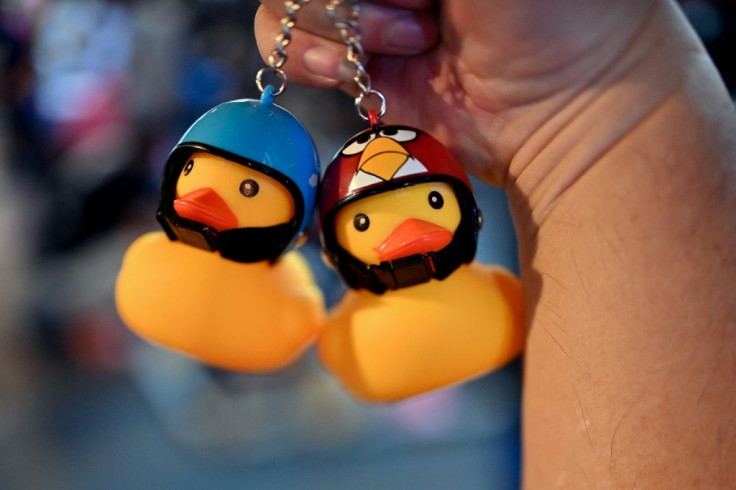National Rubber Ducky Day 2025
National Rubber Ducky Day is celebrated every Jan. 13
Every Jan. 13, National Rubber Ducky Day is celebrated to pay tribute to the rubber duck toy found in many households.
In honor of National Rubber Ducky Day, here are 12 facts about this popular bath toy.
1. A long, long history
Rubber duckies can trace their origins back to the late 1800s. At the time, the first rubber ducks didn't even float — they were cast solid and were used as chew toys for children. It wasn't until the 1940s that rubber ducks developed into the floating, yellow figure common today.
2. Rubber duckies aren't really rubber
Despite their name, rubber ducks are usually made of plastic instead of rubber.
3. There is a rubber duck the size of a building
Craig Samborski claimed to have created the world's largest rubber duck in 2014, according to Green Bay Press-Gazette. About the same height as a six-story building, the giant rubber duck, dubbed Mama Duck, is 61 feet high, 69 feet wide and 79 feet long and weighs 31,000 pounds. The rubber ducky sails around the world to appear at festivals, where people can marvel at it.
4. "Sesame Street" played a role in its popularity
While it started gaining recognition as a bathtub toy in the '50s and '60s, the rubber ducky became even more popular in the 1970s when "Sesame Street" muppet Ernie first sang the ditty "Rubber Duckie" to his best bath buddy. The song rose to number 16 on Billboard's Hot 100.
5. Rubber ducks are good for child development
Playing with rubber ducks during bath time inspires water play that develops muscle strength and coordination. With their bright color, smooth texture, and squeaky or quacky sounds, rubber ducks are known to sharpen a toddler's senses.
The floatable toy can soothe children's fear of water.
6. Rubber duckies helped scientists
In 1992, three containers full of rubber ducks fell off a cargo ship in the Pacific Ocean. The yellow floatables drifted into other bodies of water, with some ending up in England, South America, Australia and Canada. The ducks helped scientists learn more about ocean currents and waves, according to BritishCouncil.org.

7. Charlotte Lee has the world's biggest rubber duck collection
Charlotte Lee, an American woman, holds the Guinness world record for the largest rubber duck collection. After starting her collection in 1996, she revealed on "Today" that she had gathered more than 9,000 floatable ducks as of 2019.
8. Rubber was a precious commodity in World Wars I and II
During the years of World Wars I and II, rubber was considered a valuable commodity, and rationing became mandatory. By the 1940s, however, the rubber ducky began being produced in vinyl and plastic.
9. The birth of an icon
In 2001, it was revealed that Queen Elizabeth II had a rubber duck in her bathroom that wore an inflatable crown. Following the news, sales of the yellow rubber ducky soared in Britain.
10. Hall of Famer
The rubber duck became a Toy Hall of Fame inductee back in 2013.
11. Design matters
In 1928, Landon Smart Lawrence received the earliest patent for a rubber duck toy. His clever design of the floatable weighted the toy so that when it tipped, it returned to an upright position.
12. There are rubber ducky races
People around the world hold rubber ducky races, where thousands of ducks are numbered and dumped into a waterway, signaling the start of the race. The first rubber ducky to cross the finish line is declared the winner.
© Copyright IBTimes 2024. All rights reserved.





















